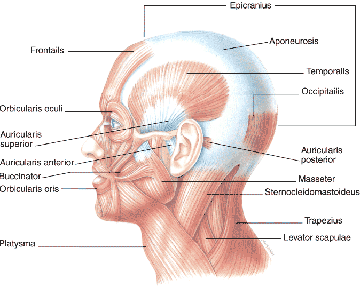TMJ Therapy
Temporomandibular Joint Disorder
 Temporomandibular joint disorder (TMJD or TMD), or TMJ syndrome is an umbrella term that covers acute or chronic inflammation of the temporomandibular joint, which connects the lower jaw to the skull. The disorder and resulting dysfunction can lead to extreme pain and impairment. Since the disorder transcends the boundaries between dentistry, neurology, and several other health-care disciplines, TMJ disorder treatment can be approached in very many different ways.
Temporomandibular joint disorder (TMJD or TMD), or TMJ syndrome is an umbrella term that covers acute or chronic inflammation of the temporomandibular joint, which connects the lower jaw to the skull. The disorder and resulting dysfunction can lead to extreme pain and impairment. Since the disorder transcends the boundaries between dentistry, neurology, and several other health-care disciplines, TMJ disorder treatment can be approached in very many different ways.
Causes of TMJD include:
- Grinding or clenching of the teeth
- Stress
- Arthritis in the joints
- Movement of the soft cushion in the joint
TMJ Disorder Symptoms:
- Eye Pain and Eye Problems – Symptoms of TMJ disorder can affect your eyes. You might experience bloodshot eyes, blurring vision, eye pain below and behind your eyes, pressure behind your eyes, light sensitivity, and watering of your eyes.
- Headaches and Facial Pain – Headaches and facial pain are common symptoms of TMJ disorder. These may include migraines, forehead pain, cluster headaches, sinus headaches, hair or scalp pain, and pain in your cheek muscles.
- Teeth and Gum Problems – You may experience symptoms of TMJ disorder that affect your teeth and gums. These problems include: clenching or grinding of your teeth, tooth pain and sensitive teeth.
- Mouth Pain and Mouth Problems – Mouth pain and mouth problems are the most common symptoms of TMJ disorder. These problems may include: limited opening of your mouth, difficulty opening your jaw smoothly or evenly, trouble finding the correct bite, clicking or popping of your jaw, jaw pain, difficulty chewing, uncontrollable tongue or jaw movements, and discomfort or pain in your face, cheeks, and chin.
- Ear Pain and Ear Problems – Ear problems are also typical symptoms of TMJ disorder. These problems include: buzzing or ringing in your ears, diminished hearing, ear pain without infection, itchy ears and a feeling of vertigo.
- Throat Problems – Symptoms of TMJ disorder can affect your throat. These symptoms may involve difficulty swallowing, tightness in your throat, pain without infection, laryngitis, and voice fluctuations.
- Neck and Shoulder Problems – Symptoms of TMJ may cause neck and shoulder problems. These symptoms may include neck pain, sore neck problems, stiffness of your neck, and back pain.
Treatments for TMJ:
- Jaw rest: Avoid chewing gum, eating hard, chewy, or crunchy foods. Do not take big bites out of food. When resting the jaw, keep the teeth apart as much as possible.
- Heat and ice therapy: These help by reducing muscle tension and spasm.
- Medications: Over the counter pain medicines such as aspirin, ibuprofen, naproxen, or steroids can help control pain and inflammation while muscle relaxants such as diazepam aid in reducing muscle spasms.
- Physical therapy: Passively opening and closing the jaw, massage, and electrical stimulation aid in reducing pain and in increasing the range of motion and strength of the temporomandibular joint.
- Occlusal therapy: A custom-made acrylic appliance worn over the teeth at night is usually prescribed. It helps balance the bite and decrease or eliminate teeth clenching or grinding.
- Surgery: If in case all medical treatments fail, surgery is the next, and probably last, option. TMJ arthroscopy, ligament tightening, joint restructuring, and joint replacement are some of the surgical procedures that can be performed to correct joint damage or deterioration.
How TMJ Treatment is Performed
The doctor will have you contract the muscle area to be treated so he can determine appropriate injection sites. Then targeted areas for the treatment may be numbed with an ice pack or a topical numbing agent. Anesthesia may or may not be used with treatment for TMJ treatments. When injected into facial muscles afflicted with soreness and discomfort, this injectable relieves TMJ and jaw tension. Most times, the injections eliminate headaches resulting from teeth grinding, and, in cases of severe stress, they can even reduce lockjaw. Even though the treatment for TMJ conditions are still considered experimental, encouraging evidence suggests that these can be extremely effective. Finally, the doctor will administer several tiny injections directly into the muscle.
Is TMJ Treatment Right for Me?
For your dentist to determine if TMJ treatment is right for you, it is important to disclose your medical history and understand your symptoms. Treatment may have small changes on the appearance of your jawline – typically making it appear smaller and thinner after several treatments. It also prevents future aging in the jawline and corrects aging lines caused by muscle movement. Years of TMJD or bruxism can lead to a square jaw and this treatment may help soften this.
Frequently Asked Questions
How Long is the Treatment Procedure?
The length of the treatment procedure depends on the number of injections needed as determined by the doctor. Still, it is reasonable for the treatment procedure to be completed within 10-30 minutes.
Is Hospital Stay Required When Injections are Used for TMJ Treatment?
Because the treatment procedure is non-surgical and done in the office, there is no hospital stay required.
Will I Need a Driver After a TMJ Treatment?
No. TMJ Treatment will not limit your driving ability.
Does Insurance Cover TMJ Treatment for Dental Issues?
Your medical insurance may cover our treatment. Our insurance experts can call your insurance company and find out if it is a covered service, submit documentation for medical necessity and then submit the insurance claims on your behalf.
What are the Side Effects of TMJ Treatment?
The treatment has few side effects. There is a risk of bruising, redness, or swelling and some patients report neck pain, headaches, or nausea. Patients who wish to undergo injections should disclose medical history, be in generally good health, not be pregnant or nursing, be infection free, and should not use our treatment if you have any allergies to ingredients.
Is the TMJ Treatment Painful?
The pain associated with the TMJ Treatment procedure is due to the injections, but it is generally minimal and brief. Some patients have likened the injection pain unto a “bug bite” or “prick”. Pain from the injection can be reduced by numbing proposed injection sites with a cold pack or anesthetic cream. If you are scared of needles the doctor may offer you Happy Gas.
What to Expect After TMJ Treatment?
After the TMJ Treatment muscle tenderness will start to disappear almost immediately. Wrinkles begin to disappear within 24 – 48 hours after the injections, and you may continue to see the wrinkles diminish up to one week after the treatment procedure. Because the treatment procedure is non-surgical and non-invasive, it is highly likely that the patient can return to normal activities immediately. However, to avoid spreading the toxin to other muscles, patients should not rub or massage the area injection area and remain upright for many hours. Physical activity should also be limited for a time.
There may be mild temporary bruising, numbness, or redness around the injection sites. You will not look 20 years younger, but you may find that you look more natural and relaxed or less sad and angry. A small number of patients treated with injections reported no noticeable difference in the reduction of their wrinkles.
Risks, Limitations & Possible Complications of Injections for TMJ Treatment
As with any medical procedure, there are possible risks and side effects when using injections for TMJ treatment. Since this is a non-surgical treatment procedure, the risks and possible complications are infrequent, minimal and temporary.
The most common reported side-effects of TMJ treatment are headaches, respiratory infection, flu syndrome, temporary eyelid droop, and nausea. Less commonly reported effects of TMJ treatment are pain, redness at the spot of injection, and muscle weakness. These symptoms are thought to be connected with the injection and occur within the first week.
There could also be bruising at the injection site. The lips are used more than the forehead for common activities such as chewing, kissing, and talking. Therefore injections around the mouth are less useful in TMJ treatment and can have more potential inconvenient effects. These everyday activities may become more difficult and too much around the mouth can result in drooling. Another limitation to injections for TMJ treatments is that there is a possibility of developing antibodies that would render the TMJ treatments less and less effective over time. This resistance could be delayed by using the lowest effective dose possible over the longest intervals of time. Injection treatments should be avoided during pregnancy and lactation.


